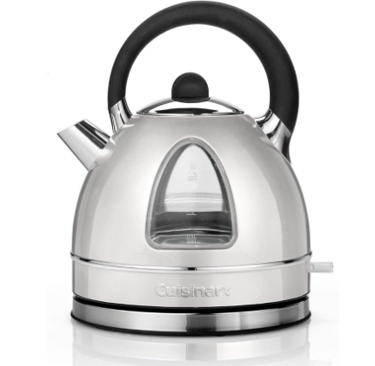The Squeeze of Climate Change: How Global Tea Crops are Being Impacted
BLOG NEWS
10/7/20257 min read


Understanding Climate Change and its Consequences
Climate change refers to significant and lasting changes in the Earth's weather patterns. This phenomenon is primarily caused by an increase in greenhouse gases, such as carbon dioxide and methane, which trap heat in the atmosphere. Human activities, including the burning of fossil fuels, deforestation, and industrial processes, have significantly contributed to these greenhouse gas emissions. As a result, global temperatures have risen, with an approximate increase of 1.1 degrees Celsius since the late 19th century, underscoring the urgency of addressing this issue.
The effects of climate change are both widespread and profound. One of the most alarming consequences is the alteration of precipitation patterns across the globe. Some regions experience increased rainfall, leading to flooding, while others suffer from prolonged droughts, resulting in water scarcity. These shifts not only disrupt local ecosystems but also pose severe challenges to agricultural productivity. For instance, the United Nations observes that approximately 20% of the world’s population currently lives in areas affected by extreme weather events, which indicates the far-reaching impact of climate change.
Extreme weather events, such as hurricanes, heatwaves, and heavy storms, have become more frequent and intense due to climate change. These events not only directly damage crops but also contribute to the long-term degradation of soil quality and agricultural infrastructure. According to the Intergovernmental Panel on Climate Change (IPCC), crop yields may decline by up to 30% by 2050 if current trends continue, severely threatening food security.
These climatic alterations set the stage for understanding their specific effects on agriculture, including sensitive crops such as tea. The complexity of tea cultivation, influenced by temperature, humidity, and rainfall, makes it an illustrative example of the challenges posed by climate change. Given the current trajectory, the tea industry faces significant risks, necessitating an in-depth examination of how climate-related issues impact global tea crops.
Impact on Tea Crop Yields and Quality
Climate change is exerting considerable pressure on tea crop yields and the overall quality of tea leaves, leading to significant changes in agricultural practices worldwide. One of the critical factors at play is the rise in average temperatures. While it may initially appear that higher temperatures could accelerate the growth cycles of tea plants, this phenomenon often results in adverse effects on the quality of the leaves produced. Specifically, quicker growth can lead to younger leaves that lack the robust flavors and aromas associated with high-quality tea.
Moreover, warmer climates foster increased incidences of pests and diseases that pose considerable threats to tea production. As temperatures rise, many pest species thrive and reproduce more quickly. This increase in pest populations can lead to higher infestations, creating a critical challenge for tea growers. For instance, the tea looper, a significant pest in various regions, has been reported to proliferate in hotter climates, thereby inflicting greater damage on tea plants. The resultant stress on the crops can further diminish leaf quality and yield, which may adversely impact local economies reliant on tea production.
Case studies from prominent tea-producing regions illustrate these climatic impacts. In India’s Assam region, where tea is a vital cash crop, rising temperatures have been linked to lower quality yields and increased pest activity. Similarly, in Kenya, higher temperatures resulting from climate change have prompted shifts in farming practices as growers attempt to adapt to altered growing conditions. These on-the-ground examples exemplify the real-world impact of climate change on tea crops, highlighting the urgency for sustainable practices and effective adaptive strategies in the face of an evolving agricultural landscape.
Regional Vulnerabilities: Tea Producing Areas at Risk
Climate change poses significant threats to tea-producing regions worldwide, particularly in well-known centers like Assam, Darjeeling, Kenya, and Sri Lanka. These areas are experiencing shifting climatic patterns, including altered rainfall, unpredictable temperatures, and increased incidences of pests and diseases. Assam, located in northeastern India, is particularly vulnerable due to its dependence on the Brahmaputra River for irrigation. Variations in rainfall patterns directly affect water availability, crucial for healthy tea crops. Furthermore, the region has observed substantial temperature increases that disrupt the optimal growth conditions for tea plants.
Similarly, Darjeeling, renowned for its high-quality tea, faces the dangers of climate change through erratic weather patterns and diminishing snow cover in the Himalayas. The unique microclimate, which contributes to the distinct flavor profile of Darjeeling tea, is under threat. Farmers in this region observe that the shift in temperature and rainfall not only impacts cultivation but also affects the local economy reliant on tourism associated with tea. To mitigate these impacts, initiatives have begun to focus on developing climate-resilient tea plants and promoting sustainable agricultural practices among local farmers.
Across the globe, Kenya stands out as one of the foremost tea producers, yet it is not immune to climate risks. Prolonged droughts and increasing temperatures challenge traditional farming techniques, disrupting both productivity and farmer livelihoods. In response, communities have started to implement water conservation and irrigation efficiency strategies. Similarly, Sri Lanka faces challenges due to climate-induced landslides, which can devastate tea estates, threatening both crop yields and the livelihoods of local farming communities. As these regions confront climate-related vulnerabilities, understanding local climate variations becomes essential in guiding adaptation measures that sustain both tea agriculture and local economies.
Future Outlook: Sustainable Practices and Adaptation Strategies
As climate change continues to pose a significant threat to global tea production, it becomes imperative to explore potential solutions and adaptation strategies that can help mitigate these impacts. Sustainable farming practices are at the forefront of this endeavor, promoting methods that not only enhance productivity but also protect the environment. Techniques such as agroforestry, which integrates trees into tea plantations, can improve biodiversity, enhance soil health, and provide shade for tea plants, thus regulating temperatures and moisture levels critical for optimal growth.
In addition to agroforestry, innovations in agricultural techniques, such as precision farming and organic cultivation, offer promising avenues for climate adaptation. Precision farming leverages technology to optimize inputs, minimizing waste and reducing the ecological footprint of tea cultivation. On the other hand, organic practices can increase resilience against climate variability by improving soil fertility and pest resistance. These methods can be particularly advantageous for smallholder farmers who are often the most affected by changes in climate, providing them with the tools necessary to adapt and thrive.
Policy changes are equally crucial in supporting these adaptation strategies. Governments can play a pivotal role by providing financial incentives for sustainable practices and investing in research and development of climate-resilient tea crop varieties. Collaborations between agricultural scientists and tea farmers can lead to the breeding of new strains that can withstand shifts in temperature and rainfall patterns. This collective effort not only aids in securing the future of tea production but also protects livelihoods dependent on this vital crop.
Ultimately, the future of tea farming hinges on collaboration among governments, organizations, and local communities. By fostering an environment of knowledge exchange and resource sharing, stakeholders can bolster the resilience of tea crops. Such collective engagement is crucial to ensure that tea remains a viable industry amidst the realities of climate change.
One of our favorite choice of kettle...
Cuisinart Traditional style Electric kettle Fast boil


Click 'Shop Now!' to find on Amazon now!...
📐 Specs – Cuisinart Traditional Style Electric Kettle
Capacity: 1.7 litres
Minimum Fill Level: 0.5 litres
Power: 3000 watts (fast boil)
Material: Brushed stainless steel body
Heating Element: Concealed
Lid Type: Fully removable (not hinged)
Water Level Windows: Dual (on both sides)
Spout: Large, drip-free design
Base: 360° swivel base (cordless when lifted)
Safety Features: Auto shut-off, boil-dry protection
Filter: Removable anti-scale filter
Cord Storage: Integrated in base
Illumination: Power switch lights up when heating
Dimensions (approx.): 28 cm (H) x 22 cm (W) x 20 cm (D)
Warranty: 3 years
Pros & Cons
Pros
Fast Boiling: Thanks to the 3000W element, water heats up quickly — ideal for busy mornings or late-night study sessions.
Generous Capacity: 1.7L means fewer refills, even when making drinks for multiple people.
Durable Design: All-metal body resists wear and feels sturdy — much better than cheap plastic alternatives.
Dual Water Windows: Easy to check water level from either side — helpful if counter space is tight.
Cordless Pouring: The 360° base makes serving simple and tidy.
Safe and Reliable: Includes boil-dry protection and auto shut-off for peace of mind.
Removable Filter: Helps reduce scale buildup, especially useful in hard water areas.
Stylish Appearance: Traditional design adds charm and fits in nicely with a range of decors.
Cons
Taller Profile: It may feel a bit bulky in very cramped kitchens or dorm setups.
Lid Is Fully Removable: No hinge means you have to set it aside when filling — not ideal if space is limited.
Hot Exterior: Stainless steel body can get hot to the touch during use.
No Temp Control: Only boils to 100°C — no option for lower temperatures for green or white teas.
Slightly Heavier When Full: The weight might be noticeable if you're carrying it between sink and counter often.
Not Whisper Quiet: It's not loud, but the fast boil feature makes a bit of a hum — normal, but worth noting.
My Review
I’ve used the Cuisinart Traditional Style Kettle in a small kitchen setup and was really impressed by how well it performs. First and foremost, the boil speed is excellent — it’s noticeably faster than lower wattage models. Whether you're in a rush or just want tea right now, it delivers.
The look and feel of the kettle really stand out. It feels more like a proper kitchen appliance and less like a student quick-fix product. It’s also big enough for sharing — perfect if you’re in a flat or dorm with roommates — but still compact enough to fit on a tight counter without hogging space.
The dual water windows are genuinely useful — especially in smaller spaces where you might not always have the best angle to check levels. The cordless design also makes serving feel much less fussy.
Sure, the fully removable lid could be a little more convenient, and the body gets warm during use, but for the price and performance, it’s hard to complain.
Final thoughts: If you're in a dorm, flat, or just working with limited space, but you still want something reliable, fast, and nice-looking — this kettle is 100% worth considering. It blends traditional charm with modern performance in a really satisfying way.
